Hardcore Shamanism
19.01.07
Why does one do things that one feels queasy about? Why is there such a charge, for instance, in having sex with the mildly repulsive? Is it some kind of bottomy urge for submission, the intensity of crossing a little-tread boundary of desire? Or some riot grrrl nihilistic flipflop of conventional values? Or a Buddhist nudge to blast away the ego? Is it a visit from the figure Poe called “The Imp of the Perverse”? Why would I dole out $200 to take a weekend shamanism workshop with an organization called Foundation of the Sacred Stream? Why would I then send in another $275 for a higher level workshop, despite misgivings with the first one? As a former cult member, I’ve gorged on and spit up enough “spiritual” hocus pocus for three lifetimes. I’m so skeptical of New Age groups that even though friends swear that meditation would help me, I have yet to visit the local Shambhala Center. Once I made it all the way to their front door. I put my hand on the knob, and as the L-Taraval streetcar rumbled past, I felt a pang of anxiety and fled. So how did I find myself jumping into the Sacred Stream?
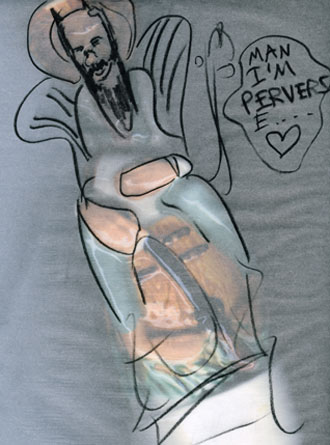 This is so fucked up, this person is bad for me, this person’s breath and armpits and asshole stink, I’m going to get hurt, they’re going to treat me like shit, this person looks like a troll, but I’m going to fuck them anyway, I’m going to fuck them again and again.
This is so fucked up, this person is bad for me, this person’s breath and armpits and asshole stink, I’m going to get hurt, they’re going to treat me like shit, this person looks like a troll, but I’m going to fuck them anyway, I’m going to fuck them again and again.
Here’s my situation. Teaching grad fiction writing, I critique 1000+ pages a month, and even when the student work is exciting, all that critiquing fries and exhausts me. I have a journalism piece due that pays well—enough to wipe out my credit card—and even though it’s an interesting topic, I’m avoiding writing it. So I’m putting off working on my novel because I have to finish this article, but week after week goes by and I don’t touch the article, don’t write anything but critiques of student work. I feel empty, stuck on a treadmill of procrastination, longing for inspiration. I’m desperate to put away my work-work and wallow in the irrational.
Humans are susceptible creatures. In her study of super-Nazi Adolf Eichmann, Hannah Arendt theorizes that Eichmann wasn’t born evil. Initially he was repelled by the death camps, as any normal person would be. How long did it take Eichmann to overcome that repugnance and become an efficient bureaucrat in the Nazi extermination machine? How long did it take him to revision mass killing as a heroic task? Four weeks. When you enter a new belief system, tiny lines are crossed and crossed and crossed—it may look from the outside that you’ve crossed a big line—but from the inside there are all these tiny incremental . . . steps . . . and you have no idea how you went from sociologist sent to study an extraterrestrial cult . . . to standing outside in the snow with your fellow believers, clad only in prescribed plastic and polyester, eager for Ro of Varna to appear from the sky. From Alison Lurie’s Imaginary Friends: “I still knew rationally that the Varnians weren’t coming, since they didn’t exist; but I felt, if only through empathy, the emotion appropriate to such an event, and the intense pressure of the group will that it should happen. My heart was beating hard.” One day I’m wondering about hypnotherapy and four weeks later I’m dancing in a circle with thirty other people who are grunting and screeching, and I’m hopping up and down so that a frog spirit can use my body to enter the middle world.
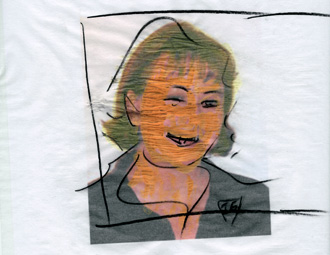 In her pioneering study of shamanism, our teacher Isa Gucciardi, Ph.D., Founding Director of the Foundation of the Sacred Stream, noticed that there are similarities in beliefs and practices among shamans across cultures. These similarities that Isa Gucciardi, Ph.D., noticed are the components of “core shamanism.” Most traditions, for example, divide the universe up into three realms—the lower world, the upper world, and the middle world. Even the Catholics use this three-part structure, with their heaven, hell, and purgatory—but they put value judgments on it. In “Introduction to the Shamanic Journey” Gucciardi will teach us core shamanic techniques to leave the middle world (the realm of everyday “waking” reality), and to journey to the upper and lower worlds, where we will meet spirit guides who will help us heal, problem solve, and understand the nature of consciousness.
In her pioneering study of shamanism, our teacher Isa Gucciardi, Ph.D., Founding Director of the Foundation of the Sacred Stream, noticed that there are similarities in beliefs and practices among shamans across cultures. These similarities that Isa Gucciardi, Ph.D., noticed are the components of “core shamanism.” Most traditions, for example, divide the universe up into three realms—the lower world, the upper world, and the middle world. Even the Catholics use this three-part structure, with their heaven, hell, and purgatory—but they put value judgments on it. In “Introduction to the Shamanic Journey” Gucciardi will teach us core shamanic techniques to leave the middle world (the realm of everyday “waking” reality), and to journey to the upper and lower worlds, where we will meet spirit guides who will help us heal, problem solve, and understand the nature of consciousness.
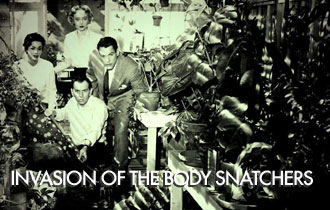 Saturday morning I drive across the Bay Bridge to Oakland. MapQuest leads me to a surprisingly residential neighborhood near Mills College. There are no signs announcing the Foundation of the Sacred Stream. Could this unmarked two-story house with the white picket fence really be it? I stand there dumbly for a couple of minutes until a smiling lesbian couple carrying yoga mats approaches and opens the wooden gate. They give me courage and I trail after them. As the weekend progresses and all the drumming and hissing and animal cries spill out through the windows, I wonder what Dionysian perversions the neighbors imagine go on behind that innocent-looking white picket fence. Are they thinking of Hitchcock’s Shadow of a Doubt—the Merry Widow Murderer moves into small town America? Or Invasion of the Body Snatchers—Communist-inspired space aliens move into suburban America? Are they thinking of The Stepfather—psychopathic dad moves into an all-American family? Do they have 911 set for speed-dial, just in case those inhuman-sounding cries get out of hand? Inside it looks pretty much like a normal house, a kitchen, two good-sized rooms, a staircase going up to the second floor. The bathroom has been remodeled to include two tiny (like knees against the door) wooden bathroom stalls. Hardwood floors throughout, with the ubiquitous Oriental carpets and ethnic/spiritual decorations of liberal East Bay residences. Furniture is sparse, mostly sofas pushed up against the walls. A couple dozen green cotton floor-chairs line the rest of the wall space of the larger of the two rooms. It’s comfortable there, and with nearly thirty people crammed together, kind of cozy.
Saturday morning I drive across the Bay Bridge to Oakland. MapQuest leads me to a surprisingly residential neighborhood near Mills College. There are no signs announcing the Foundation of the Sacred Stream. Could this unmarked two-story house with the white picket fence really be it? I stand there dumbly for a couple of minutes until a smiling lesbian couple carrying yoga mats approaches and opens the wooden gate. They give me courage and I trail after them. As the weekend progresses and all the drumming and hissing and animal cries spill out through the windows, I wonder what Dionysian perversions the neighbors imagine go on behind that innocent-looking white picket fence. Are they thinking of Hitchcock’s Shadow of a Doubt—the Merry Widow Murderer moves into small town America? Or Invasion of the Body Snatchers—Communist-inspired space aliens move into suburban America? Are they thinking of The Stepfather—psychopathic dad moves into an all-American family? Do they have 911 set for speed-dial, just in case those inhuman-sounding cries get out of hand? Inside it looks pretty much like a normal house, a kitchen, two good-sized rooms, a staircase going up to the second floor. The bathroom has been remodeled to include two tiny (like knees against the door) wooden bathroom stalls. Hardwood floors throughout, with the ubiquitous Oriental carpets and ethnic/spiritual decorations of liberal East Bay residences. Furniture is sparse, mostly sofas pushed up against the walls. A couple dozen green cotton floor-chairs line the rest of the wall space of the larger of the two rooms. It’s comfortable there, and with nearly thirty people crammed together, kind of cozy.
The crowd looks very East Bay. As opposed to the anorexic glitz of Marin, East Bay New Agers feel rather Socialist Party. Think cotton pants with elastic waistbands, salon cuts with the gray left brazenly undyed. Isa Gucciardi and two shamanic helpers sit on kitchen chairs in one corner, beside a table-turned-altar. At the center of the altar is a pile of burning sage; scattered around the sage are feathers, shells, rattles, and other natural world items associated with indigenous cultures. A sampling of rawhide drums lie on the floor beneath it. I sit on a floor-chair directly across from the altar. This is my space for the entire weekend, except when we’re journeying. Then we students lie on the floor on air mattresses, blankets and yoga mats. We completely fill the floor, supine slabs interlocked tightly as puzzle pieces. Spill-over bodies lie in the smaller room on the other side of the kitchen. I imagine a nosey neighbor peeking in and wondering what kind of Kool-Aid we just drank.
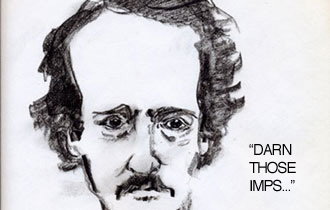 Gucciardi is a fleshy woman with short spiky hair and rosy cheeks. She wears floral calf-length pants, a short sleeve shirt, and athletic sandals. Her affect is open and jolly, and she conducts the class in a jokey, all-American “we’re-just-folks” mode which relaxes the students. We stand up and all hold hands. Following Gucciardi’s lead we sing that there’s beauty in front of us, beauty behind us, beauty on either side of us, etc., until there’s beauty in all directions. It’s a sweet little melody. When we’re finished, bad entities cannot cross our circle. Gucciardi has the power to “hold the circle” and make it safe for the rest of us.
Gucciardi is a fleshy woman with short spiky hair and rosy cheeks. She wears floral calf-length pants, a short sleeve shirt, and athletic sandals. Her affect is open and jolly, and she conducts the class in a jokey, all-American “we’re-just-folks” mode which relaxes the students. We stand up and all hold hands. Following Gucciardi’s lead we sing that there’s beauty in front of us, beauty behind us, beauty on either side of us, etc., until there’s beauty in all directions. It’s a sweet little melody. When we’re finished, bad entities cannot cross our circle. Gucciardi has the power to “hold the circle” and make it safe for the rest of us.
For our first ten-minute journey Gucciardi tells us to go down a tunnel until we enter the lower world. Once we’re there, we should look for our power animal. If an animal appears, we’re to ask if it’s our teacher. If it says no, we’re to move on to another animal. For those of us who aren’t visual, the animal may manifest as a sound or a smell or a feeling. I focus on Gucciardi’s instructions as I lie on the floor and fidget with my silk eye pillow, but I don’t expect to actually be able to do any of the things she says. When I was involved in Eckankar, back in the ‘70s when it was still called “the ancient science of soul travel,” I had few of the dramatic experiences I read about in the books. Mostly I listened to the buzzing inside my head and tried to convince myself I was tuning in to the sound current that “sustains all life.” Leaving their bodies and traveling to “other planes of existence” proved a daunting task for many students. In recent years Eckankar has begun emphasizing more user-friendly techniques, such as dream interpretation and deciphering messages from “soul” that appear in the real world. In the ‘80s I took psychic development classes with Tamara Diaghilev, a former rock show organizer from the early Bill Graham days who claimed to be the niece of ballet impresario Sergei Diaghilev. I was a graphic artist at the time, and as I was bent over my drafting board, this high strung, thin as a rail, super glamorous artist—she was the Charlotte Rampling of graphics—recommended Tamara. I can’t remember the artist’s name, but who wouldn’t want to do whatever she did? Tamara had a heavy Russian accent. I remember sitting in her living room surrounded by crystals and unicorns, as she led a dozen or so of us through a visualization. “Open yourself to the yoo-nee-veerse,” she said. I took class after class with her, even went on a vision quest, but I never experienced even the teeniest bit of psychic awakening. I’ve had therapists try to hypnotize me, exorcise me, lead me through Jungian memory regression, and it was all a bust.
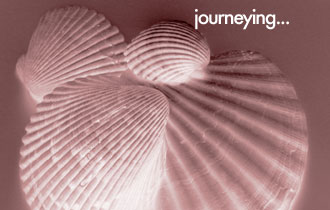 So I didn’t have high hopes for journeying, but when Gucciardi began to rhythmically pound a rustic drum, I immediately found a hole, climbed in, and hurled downward. As soon as I stepped on solid ground, I was greeted by a frog, and images from my youth flashed before me. When we made papier-mâché animals in junior high art class—what animal did I make? A frog! I remembered the teeny gold frog-shaped earrings I wore in high school and how my grandmother used to make me toy animals, cotton poplin stuffed with cut-up nylons, I had a mound of them on my bed, and the frog was my favorite. I discovered if I placed one of its hind legs up against my clit and laid on my belly and squeezed it rhythmically, I would come. My frog was the only stuffed animal I took to college with me. It was green with big red lips. The material at the back of the lips wasn’t joined, so I could stick my hand between the frog’s lips and reach all the way into its nylon guts. So, when a friend from back home begged me to send him some of the great marijuana available in Bloomington, I stuffed a lid inside the frog’s belly and mailed it off to John, without a return address. The package never arrived and my frog was lost. But now, as I stood at the edge of the lower world, he had returned to me. His big bulgy eyes met mine and I knew he was my guide. He started to jump up and down and I followed suit, we jumped over and over again, the earth soft and springy as a trampoline. Frog swelled to elephant-size, suddenly I was riding on his back as he hopped through a tropical terrain with giant frog strides. When we skinny-dipped in the ocean he shrank to the size of a man; he stood on his hind legs and we danced on the shore. Side by side on a rock we watched a meteor shower in the night sky. It was so much fun—gleeful—like I had my own private amusement park. When Gucciardi changed the rhythm of the drum to signal it was time to return, I didn’t want to leave, but I dutifully waved goodbye to Frog and entered the tunnel I had arrived in. Upwards I shot, back to the middle world.
So I didn’t have high hopes for journeying, but when Gucciardi began to rhythmically pound a rustic drum, I immediately found a hole, climbed in, and hurled downward. As soon as I stepped on solid ground, I was greeted by a frog, and images from my youth flashed before me. When we made papier-mâché animals in junior high art class—what animal did I make? A frog! I remembered the teeny gold frog-shaped earrings I wore in high school and how my grandmother used to make me toy animals, cotton poplin stuffed with cut-up nylons, I had a mound of them on my bed, and the frog was my favorite. I discovered if I placed one of its hind legs up against my clit and laid on my belly and squeezed it rhythmically, I would come. My frog was the only stuffed animal I took to college with me. It was green with big red lips. The material at the back of the lips wasn’t joined, so I could stick my hand between the frog’s lips and reach all the way into its nylon guts. So, when a friend from back home begged me to send him some of the great marijuana available in Bloomington, I stuffed a lid inside the frog’s belly and mailed it off to John, without a return address. The package never arrived and my frog was lost. But now, as I stood at the edge of the lower world, he had returned to me. His big bulgy eyes met mine and I knew he was my guide. He started to jump up and down and I followed suit, we jumped over and over again, the earth soft and springy as a trampoline. Frog swelled to elephant-size, suddenly I was riding on his back as he hopped through a tropical terrain with giant frog strides. When we skinny-dipped in the ocean he shrank to the size of a man; he stood on his hind legs and we danced on the shore. Side by side on a rock we watched a meteor shower in the night sky. It was so much fun—gleeful—like I had my own private amusement park. When Gucciardi changed the rhythm of the drum to signal it was time to return, I didn’t want to leave, but I dutifully waved goodbye to Frog and entered the tunnel I had arrived in. Upwards I shot, back to the middle world.
 Once everyone resumed their positions on floor-chairs and couches, Gucciardi instructed us to write what happened in our journals. When we finished with that, we were to find someone we didn’t know and share our experiences. I partnered with the woman who’d been lying on the floor beside me. “You start,” she said. I was shy at first but quickly found myself spewing out everything, including my masturbation bouts with the stuffed animal. “So you see how perfect it is I met a frog!” Her face stiffened behind her oval wire rims and she didn’t say a word. “So then I jumped on the frog’s back,” I chattered away to hide our embarrassment. I always forget that, unlike the perverts I hang out with in San Francisco, some lesbians don’t talk about sex with the casual eagerness with which they discuss favorite TV shows. “And what was your power animal?” I asked my partner. “A majestic wolf.” Person after person had met owls and eagles and tigers and bears—powerful, respectable animals. I was the only one who’d gotten a slimy little frog.
Once everyone resumed their positions on floor-chairs and couches, Gucciardi instructed us to write what happened in our journals. When we finished with that, we were to find someone we didn’t know and share our experiences. I partnered with the woman who’d been lying on the floor beside me. “You start,” she said. I was shy at first but quickly found myself spewing out everything, including my masturbation bouts with the stuffed animal. “So you see how perfect it is I met a frog!” Her face stiffened behind her oval wire rims and she didn’t say a word. “So then I jumped on the frog’s back,” I chattered away to hide our embarrassment. I always forget that, unlike the perverts I hang out with in San Francisco, some lesbians don’t talk about sex with the casual eagerness with which they discuss favorite TV shows. “And what was your power animal?” I asked my partner. “A majestic wolf.” Person after person had met owls and eagles and tigers and bears—powerful, respectable animals. I was the only one who’d gotten a slimy little frog.
From “Our Red Earth Observations On Internet Exploiters Of American Indian Spirituality”: Curiously, no one ever seems to claim anything but predatory or graceful (i.e. "deer") animals as "totems." One wonders who is remaining silent—surely someone out there has a flea, tick, or a maggot assigned to his person?
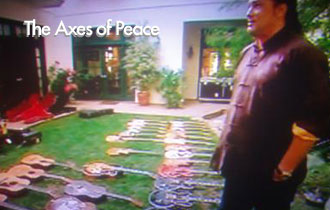 From the film, On Deadly Ground: After the oil tycoons try to blow him up, Steven Seagal finds himself lying on a bearskin in an Eskimo hut. The medicine man enters wearing an eagle headdress. His daughter, a beautiful Chinese Eskimo woman, translates for the two men. She says to Seagal, “He thought you might be a bear. He thinks you might still be a bear. He hasn’t decided yet.” Seagal: “Nah. You tell him I’m a mouse hiding from the hawks in the house of a raven.” Beautiful Chinese Eskimo woman: “He says that’s just what a bear would say.” The medicine man sprinkles herbs on Seagal’s back and digs out shrapnel with a hunting knife. When Seagal screams, the daughter says, “He says you sound like a bear too.” Later that night Seagal sneaks out of his spacious recovery room, which must be the master bedroom of the Eskimo hut because in the rest of the hut, sleeping Eskimos are crammed in every which way, some double-decker in cot-like structures built into the honeycomb wall. Seagal sneaks past them all, crawls outside, and tries to run off with their dogsled. But the dogs attack him, which wakes the Eskimos. They come running out and the medicine man’s daughter says to Seagal, “He says if you’re healthy enough to steal, you’re healthy enough to make your journey.” They loan Seagal the dogsled for they know he’s the man-bear of their visions, whose destiny is to teach “them” to respect the land.
From the film, On Deadly Ground: After the oil tycoons try to blow him up, Steven Seagal finds himself lying on a bearskin in an Eskimo hut. The medicine man enters wearing an eagle headdress. His daughter, a beautiful Chinese Eskimo woman, translates for the two men. She says to Seagal, “He thought you might be a bear. He thinks you might still be a bear. He hasn’t decided yet.” Seagal: “Nah. You tell him I’m a mouse hiding from the hawks in the house of a raven.” Beautiful Chinese Eskimo woman: “He says that’s just what a bear would say.” The medicine man sprinkles herbs on Seagal’s back and digs out shrapnel with a hunting knife. When Seagal screams, the daughter says, “He says you sound like a bear too.” Later that night Seagal sneaks out of his spacious recovery room, which must be the master bedroom of the Eskimo hut because in the rest of the hut, sleeping Eskimos are crammed in every which way, some double-decker in cot-like structures built into the honeycomb wall. Seagal sneaks past them all, crawls outside, and tries to run off with their dogsled. But the dogs attack him, which wakes the Eskimos. They come running out and the medicine man’s daughter says to Seagal, “He says if you’re healthy enough to steal, you’re healthy enough to make your journey.” They loan Seagal the dogsled for they know he’s the man-bear of their visions, whose destiny is to teach “them” to respect the land.
We did several journeys that weekend. We returned to the lower world and asked our power animal a question. We flew to the upper world and met a spirit guide who appeared to us in human form. We practiced asking a question and seeing whether we were pulled to the upper world or the lower world. I couldn’t believe how easy this was. Most of the group was having lively, dayglo experiences. Gucciardi credited her incessant drumming, what in neoshamanist terms is called the sonic driver. “Ride the drum,” Gucciardi and the helpers told us throughout the weekend. Still there were a few troublesome people who after three or four journeys still hadn’t seen, heard or felt anything, who didn’t have a power animal. When one student offered that in traditional cultures people prepare for such work by fasting, sweat lodges and other rigorous forms of purification, Gucciardi shook her head and said, “I’m into comfort.” She explained that the reason these people were so slow to see results is that they were resistant, and that their resistance to journeying was understandable, they were afraid. Maybe they’d had some bad experiences in the past. It was decided that the shamanic helpers would travel to the lower world and find their power animals for them. There were four animal-challenged people, so each shamanic helper would do two power retrievals at once. The helpers lay on the floor, with a student lying on each side of them, touching shoulders and hips. They formed two shamanic sandwiches, the students the bread and the shamanic helper the lunchmeat snuggled between them. The sandwiches closed their eyes and Gucciardi began drumming. When the drumming stopped each helper put her hands together, forming a megaphone shape and blew through it onto the tops of the students’ skulls and at the bases of their necks. Then they told them their power animals. The one woman’s animal was a doe. The men received masculine, powerful animals. Doesn’t sound like there’s a lot of gendered-bending going on in the lower world, I huffed to myself, and then I felt guilty for such unkindness, such tacky pettiness. Dodie why do you always have to be the rotten apple in the barrel?
 Gucciardi’s face turns serious. Someone has asked a question about tonglin, a Buddhist practice advocated by Pema Chodron. To develop compassion you breathe in suffering and darkness and breathe out contentment and light. “I know why Pema’s doing it,” Gucciardi says, “but it’s dangerous.” We have to be careful about what we allow in. In the advanced class she’ll teach us how to navigate the middle world, how to protect ourselves. Another student says he learned to journey at Burning Man and he had some disturbing experiences. Gucciardi replies that Burning Man, with its weird energy, isn’t a safe place to learn to journey. Journeying at Burning Man you’re opening yourself to all kinds of things, but here in Gucciardi’s circle, nothing bad was going to get to us. I think back to Tamara Diaghilev. She taught us visualizations for protection, but she never suggested the world was a particularly dangerous place. Hers was a cheerful world with rainbows and unicorns and quartz crystal pendants refracting the sunlight. When the lunch break’s announced, someone asks about the list of restaurants posted in the hallway. Gucciardi says there’s a good burrito place five minutes away, but it’s a dangerous neighborhood. Her helper says it’s fine, but Gucciardi reiterates that it’s dangerous, that people should go in groups. During lunch I see her eating a burrito that some brave group brought back for her.
Gucciardi’s face turns serious. Someone has asked a question about tonglin, a Buddhist practice advocated by Pema Chodron. To develop compassion you breathe in suffering and darkness and breathe out contentment and light. “I know why Pema’s doing it,” Gucciardi says, “but it’s dangerous.” We have to be careful about what we allow in. In the advanced class she’ll teach us how to navigate the middle world, how to protect ourselves. Another student says he learned to journey at Burning Man and he had some disturbing experiences. Gucciardi replies that Burning Man, with its weird energy, isn’t a safe place to learn to journey. Journeying at Burning Man you’re opening yourself to all kinds of things, but here in Gucciardi’s circle, nothing bad was going to get to us. I think back to Tamara Diaghilev. She taught us visualizations for protection, but she never suggested the world was a particularly dangerous place. Hers was a cheerful world with rainbows and unicorns and quartz crystal pendants refracting the sunlight. When the lunch break’s announced, someone asks about the list of restaurants posted in the hallway. Gucciardi says there’s a good burrito place five minutes away, but it’s a dangerous neighborhood. Her helper says it’s fine, but Gucciardi reiterates that it’s dangerous, that people should go in groups. During lunch I see her eating a burrito that some brave group brought back for her.
You may have harmful entities attached to you and not even know it. Perhaps Sacred Stream shamanic practitioners can remove and heal these entities you don’t know about.
As the weekend progressed the drumming felt more and more visceral. Not only was I ablaze with visions, my face and arms were twitching with surges of emotion I couldn’t define, let alone interpret. It was like my emotion glands were squirting out chemicals erratically and crazily. Surge, surge, surge. I couldn’t tie any of it to content in my regular life. What does all this intensity mean? Does it mean anything at all, should I even try to interpret it? At the time I didn’t ask the obvious: Is this healthy? Gucciardi led a few volunteers through a process of interpretation, but mostly her response to the confused was: “Journey on it.” In the kitchen there are T-shirts for sale with “journey on it” in a Celtic font emblazoned across the chest. Translation: Go back in and ask your spirits about it. Gucciardi said we could take as much time as we needed to write down our experiences, so when others were pairing up, I sat, avoiding eye contact, and continued to write in my journal. This was my one act of rebellion the entire weekend. Each time we journeyed I was less and less willing to share my journey with a stranger. The journeys felt too tender, too undigested for such chitchat.
Sunday afternoon Gucciardi announced that we were going to call our spirit teachers from the lower world and upper world into the room through dancing. Our dance should mimic the gestures of our power animal, and if appropriate we should make the sounds of the animal. We would know when it arrived, and then we were to move onto our guide from the upper world, dancing his or her character. Gucciardi scanned the assembled novice journeyers. Even the most zealous looked skeptical. Before anybody could raise an objection, she said sternly that if we were going to do this work, we had to get over our inhibitions and stop caring what other people thought of us. We all stood up and she started the drumming. Lifelong inhibitions about making fools of ourselves in public instantly overcome, we all started to dance. The woman in front of me bent over and stomped her feet on the ground, making low rhythmic grunts like I’ve seen in cowboy movies when Indians are preparing to go on the warpath. I hopped about like a frog and made ribbet, ribbet sounds under my breath. When the hopping got easier I decided Frog had entered, and then I moved onto my upper world teacher, holding my head up high and strutting regally. I looked around the room and many people were strutting regally, like it was the default mode. Thank god I don’t have to hop any more, I thought. The drumming stopped, and Gucciardi said enthusiastically, “Feel the energy in the room, can you feel how it’s changed!” She told us we’d just had our first lesson in channeling. Memory: I’m standing in an auditorium full of people holding crystal balls to their throats while on stage a man transchannels with a brogue—it’s all coming back to me—it cost $50 and he was Tamara’s teacher.
 Gucciardi warns us not to talk about our shamanic training outside the group. Others won’t understand and we’ll get hurt. From Lurie’s Imaginary Friends: “They were all waiting for something they had been promised over and over again, which they wanted very much, and for the sake of which they had undergone discomfort, isolation, and social ridicule.”
Gucciardi warns us not to talk about our shamanic training outside the group. Others won’t understand and we’ll get hurt. From Lurie’s Imaginary Friends: “They were all waiting for something they had been promised over and over again, which they wanted very much, and for the sake of which they had undergone discomfort, isolation, and social ridicule.”
Our assembled spirit guides were going to help Gucciardi do a healing. The woman to be healed had been chosen ahead of time. Gucciardi was vague about what was wrong with her. I’d talked with the woman and her partner during our lunch break, and they both seemed pretty happy to me. They were into solar energy. The partner gave me a pear she’d dehydrated herself. The couple owns many acres of land a couple of hours up the coast, and more than once I heard them mention they’d like to convert some of that land into a spiritual retreat. The chosen one sat in a chair in the center of the room with her eyes closed. Gucciardi, barefoot in calf-length pants and a black “journey on it” T-shirt, pounded her drum and started moving about the room. One of her legs began twitching in quick spasms that reminded me of a scratching chicken. She drummed and hissed and made guttural sounds. Her body lurched in awkward, inhuman angles. She kept drumming and hissing and lurching for what seemed like ages, all the while her eyes eerily intent on the woman sitting in the chair, and then she had one of the shaman helpers fetch her a bird wing from the altar—the wing was brown and big as a hand fan—which she used to swipe the air around the woman’s head and shoulders. Several minutes later, Gucciardi stood there in silence, looking exhausted. Tears were streaming down the woman’s face. It was quite a show. Ectoplasm-spewing mediums have nothing on shamanism, I thought. Gucciardi said this was a preview of what we would learn in the advanced shamanism classes.
Sunday evening, after I’d hugged goodbye to Gucciardi and classmates, I got in my little red Subaru and headed back to the I-580. I was high from the weekend but also afraid. I couldn’t quit thinking about Gucciardi’s healing ceremony. I had no desire to perform such spectacles myself—but what if I changed, turned into something I wouldn’t recognize, a woman whose legs twitched about like spastic chickens? I had already hopped around like a frog, against my better judgment, against my will even. If this was so great, I said to myself as I approached the tollbooths at the Bay Bridge, why do you feel depressed? Journeying was like watching a movie on fast-forward—vivid but frenetic, lacking nuance and worse, lacking context. What was I to do with all this vividness, these tumbling psychic fragments—could I even call them information? Even though the journeying came easy, there was something about it that smacked of trying too hard. I always was a good student, was always like this young Nazi in my zeal to do everything exactly as the teacher instructed, in my disdain for sloppy classmates who didn’t listen, who did things wrong or half-assed. I had experienced everything Gucciardi asked me to experience, so what was the problem? When I got home I squelched my ambivalence and wrote her a glowing letter, saying how great it was and that I’d love to study with her privately. I also sent in my $275 registration fee for “Applied Shamanism Foundation Course, Level I,” which was happening in less than two weeks.
Read pt. 2
Illustrations on page 1 and 9 by Robin Brasington. Other drawn illustrations by Casey McKinney.
